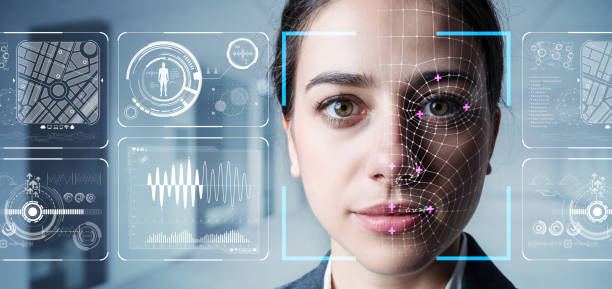Emotion recognition is one of the various facial recognition systems that have evolved through time. Currently, facial emotion recognition software is utilized to allow a specific program to inspect and process human facial expressions. Using complex image dispensation, this program acts like a human brain, allowing it to recognize emotions as well.

AI identifies and examines various facial expressions to use them with extra information. This is beneficial for a number of purposes, including investigations and interviews, and enables authorities to identify a person’s emotions using just technology.
What emotions can be recognised by AI system?
- Anger
- Joy
- Surprise
- Fear
- Sadness
How does face recognition works?
Every year, facial expression-detecting technology becomes increasingly advanced. The AI used recognizes and examines facial expressions based on a variety of parameters to determine what emotion the individual is displaying. Factors like:
- Using Metrics:
When a person exhibits a certain feeling or expression (for example, a grin) together with a level of confidence. It may be conceived of as a detector by employing metrics: The score climbs from 0 (no expression) to 100 (expression fully present) when the emotion or facial expression arises and strengthns .
- Using Datasets:
The data consists of grayscale pictures of faces with 48×48 pixels. The faces have been automatically positioned such that they are about centered and take up around the same amount of area in each image. The aim is to categorize each face depending on the emotion expressed in the facial expression (0=Angry, 1=Disgust, 2=Fear, 3=Happy, 4=Sad, 5=Surprise, 6=Neutral).
- Using ParralleDots:
ParralleDots has developed an AI-based solution that developers may utilize after training on a specified data set to detect images.
The process of developing an emotion detection model, like any other AI project, begins with project planning and data collecting. More information on the steps of an AI project and the collecting of datasets may be found in our dedicated articles.
Let’s take a break from the data acquired for an emotion identification model. It is a vital (and time-consuming) component of the future algorithm since it must be gathered, analyzed, safeguarded, and annotated. This data is necessary to train the emotion recognition model, which is essentially a procedure that teaches the machine how to interpret the data you provide it.
Finally, is important to understand that there are unsolved issues and hazards associated with emotion detection. The intellectual underpinning of this technology is dubious at best, and privacy concerns have caused a few big cities in the United States to ban its usage by the police. However, there is no need to be disappointed by these flaws. Emotion recognition is still in its early stages, but it will get stronger, more accurate, and more secure. With high-quality data and annotation, cultural understanding, and privacy restrictions in place, emotion detection algorithms might be among the most useful technologies of our time.
What do you think about such innovation?

References:
https://recfaces.com/articles/emotion-recognition
https://tudip.com/blog-post/what-is-emotion-recognition/
https://link.springer.com/article/10.1007/s10919-020-00340-4




